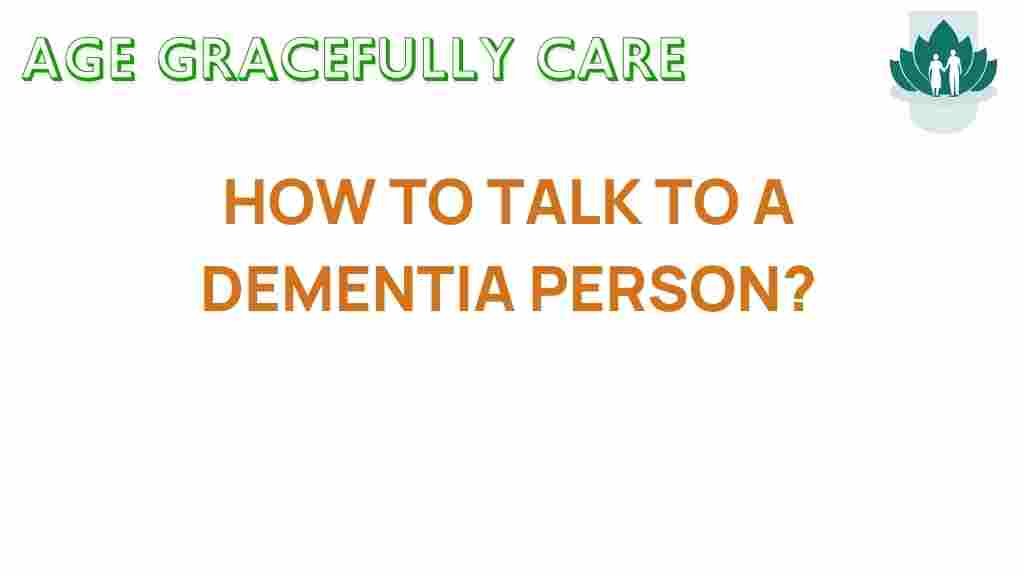Dementia Communication: Essential Tips for Caregivers
Navigating conversations with a dementia patient can be a challenging yet rewarding experience. As caregivers, understanding how to communicate effectively with someone suffering from memory loss is crucial for fostering an emotional connection and providing the necessary support. This article will explore essential tips for dementia communication, emphasizing the importance of patience, understanding, and compassion.
The Importance of Effective Dialogue in Dementia Caregiving
Effective dialogue is key when caring for a person with dementia. This condition affects cognitive functions, leading to difficulties in remembering words, understanding conversations, and processing information. Here are some fundamental reasons why effective communication matters:
- Builds Trust: Clear communication fosters trust between the caregiver and the patient.
- Reduces Frustration: Effective dialogue can minimize misunderstandings, reducing frustration for both parties.
- Enhances Emotional Connection: Meaningful conversations can strengthen the emotional bond, providing comfort and companionship.
Step-by-Step Process for Effective Communication with Dementia Patients
Engaging with someone who has dementia requires a specific approach. Here’s a step-by-step guide to facilitate effective communication:
1. Create a Calm Environment
Before initiating a conversation, ensure that the setting is conducive to communication. A calm and quiet environment can significantly enhance understanding. Here’s how to set the stage:
- Choose a quiet room with minimal distractions.
- Ensure adequate lighting to avoid confusion.
- Minimize background noise, such as television or music.
2. Approach with Patience
Patience is a vital attribute for caregivers. Dementia patients may take longer to respond or may have difficulty finding the right words. Here’s how to embody patience:
- Give them time to process information.
- Don’t interrupt or finish their sentences.
- Use a gentle tone and maintain eye contact.
3. Use Simple Language
When communicating, simplicity is key. Avoid complex sentences and jargon. Instead, try the following:
- Use short, clear sentences.
- Speak slowly and distinctly.
- Ask yes or no questions when possible.
4. Non-Verbal Communication
Body language and facial expressions play a significant role in communication. Here are some tips to enhance non-verbal communication:
- Use gestures to reinforce your message.
- Maintain a warm and friendly facial expression.
- Be aware of your body language; avoid crossing arms or appearing tense.
5. Validate Their Feelings
Recognizing and validating the emotions of a dementia patient is crucial. Here’s how to do this effectively:
- Acknowledge their feelings without judgment.
- Use phrases like “I understand that you feel…”
- Encourage them to express themselves, even if it’s difficult.
6. Use Reminiscence Therapy
Reminiscence therapy can be an effective way to engage with dementia patients. This method involves discussing past experiences and memories. To implement this:
- Ask open-ended questions about their past.
- Show interest in their stories and experiences.
- Use photo albums or familiar objects to spark memories.
Common Challenges in Dementia Communication and Troubleshooting Tips
Despite your best efforts, you may face challenges when communicating with a dementia patient. Here are some common issues and how to troubleshoot them:
1. Difficulty Understanding
If the patient seems confused or does not understand, try the following:
- Rephrase your question using simpler words.
- Use visual aids or physical demonstrations.
- Break information into smaller, manageable parts.
2. Memory Loss and Repetition
Repetition is common in dementia patients. If they repeat questions or stories:
- Respond with patience and kindness, as if it’s the first time.
- Redirect the conversation gently to a different topic.
- Engage with a related memory or story to provide context.
3. Emotional Outbursts
Emotional outbursts can occur due to frustration or confusion. To manage these moments:
- Remain calm and composed.
- Validate their feelings and offer reassurance.
- Redirect their attention to a comforting activity.
Additional Tips for Strengthening Emotional Connection
Building an emotional connection with a dementia patient can significantly improve their quality of life. Here are some additional tips:
1. Consistency is Key
Try to maintain a consistent routine. Familiarity can provide comfort and security for the patient.
2. Engage in Activities Together
Participate in enjoyable activities that they love. Whether it’s gardening, listening to music, or looking through old photographs, these shared experiences can enhance emotional bonds.
3. Use Humor When Appropriate
Humor can lighten the mood and make conversations more enjoyable. Share light-hearted stories or jokes, ensuring that they are appropriate for the moment.
4. Attend Support Groups
Joining caregiver support groups can provide valuable insights and shared experiences. You can learn effective techniques for dementia communication and gain emotional support.
For more resources on caregiving, visit this website for additional tips and support.
Conclusion
Communicating with a dementia patient requires a blend of patience, compassion, and understanding. By employing effective dialogue techniques and being mindful of their emotional needs, caregivers can create a nurturing environment that fosters connection and support. Remember, each interaction is an opportunity to share a moment of joy and understanding. By embracing these essential tips, caregivers can navigate the complexities of dementia communication with confidence and empathy, ensuring that their loved ones feel valued and understood.
For more in-depth information on dementia caregiving and communication strategies, consider exploring external resources like this informative article.
This article is in the category Care and created by AgeGracefullyCare Team

1 thought on “Navigating Conversations with a Dementia Patient: Essential Tips”